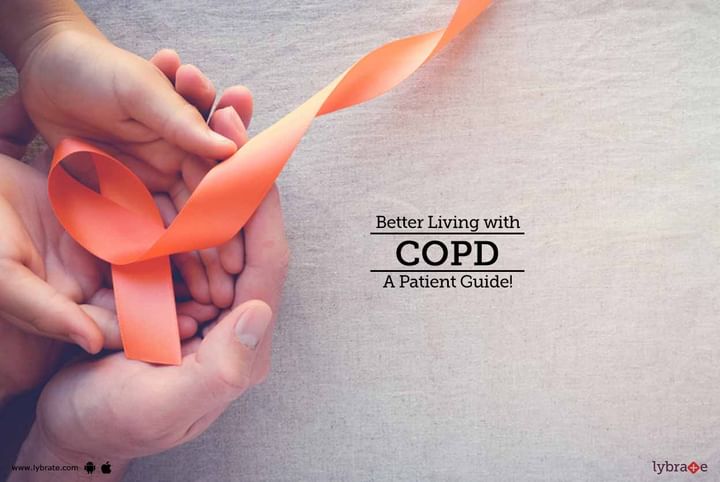Better Living with COPD - A Patient Guide!
Chronic Obstructive Pulmonary Disease or COPD for short is a respiratory disease that makes it increasingly difficult to breathe; the lungs stop functioning properly. There are mainly two categories of COPD which are emphysema and chronic bronchitis. The primary reason for COPD is longstanding exposure to substances such as cigarette smoke, chemical fumes and air pollutants that damage the lungs gradually.
Initially, the symptoms of COPD may be really mild but over time it may become extremely severe. These include symptoms such as:
- Shortness of breath
- Coughing with mucous formation
- Wheezing or gasping
- Tightness in the chest
- Feeling tired constantly after doing normal daily activities or after exercising.
In the long run, the damages can prove to be permanent.
Of the two subtypes mentioned, bronchitis is when the airways become inflamed as well as narrowed. People suffering from bronchitis tend to produce sputum which is basically a combination of mucus and saliva.
And the other subtype, Emphysema is the condition when the air sacs in the lungs become affected. The air sacs degenerate and become baggy with lots of holes in it. This, in turn, traps air. This narrows the airways making it difficult to breathe. In COPD, there is a narrowing of the lungs because:
- The lining of the airway becomes inflamed
- The lining of the airways which is elastic flops
- The tissues of the lungs become damaged so there is an exertion on the airway.
COPD, in the long run, can lead to a number of health complications such as heart disorders, lung cancer, respiratory infections, depression and high blood pressure. COPD is treatable but not curable because it is a life-long condition. The following are some of the treatment methods for COPD:
- Oxygen Therapy- If you are experiencing low levels of oxygen then opting for a portable oxygen unit will be extremely beneficial.
- Medication- Bronchodilators help in relaxing the airway muscles for comfortable breathing. These medications are usually taken via an inhaler. Other medications include corticosteroids, theophylline, vaccines and antibiotics/antivirals.
- Surgery- Surgery is usually advised as the last step when the COPD condition has become so severe that all other methods of treatment have failed. This is, more possible, in the case of emphysema. There are mainly two surgical methods: one is bullectomy when the surgeons remove the damaged air sacs. The other method is lung volume reduction which removes the lung tissues that have become damaged.
Adopting certain lifestyle changes can provide relief for the time being. Such alterations include:
- Quit smoking immediately, if you haven’t already.
- Try to avoid passive smoking as much as possible. Passive smoking is as damaging as firsthand smoking.
- Give your body the daily dose of nutrition so that the immune system doesn’t falter as well.
In case you have a concern or query you can always consult an expert & get answers to your questions!



+1.svg)
